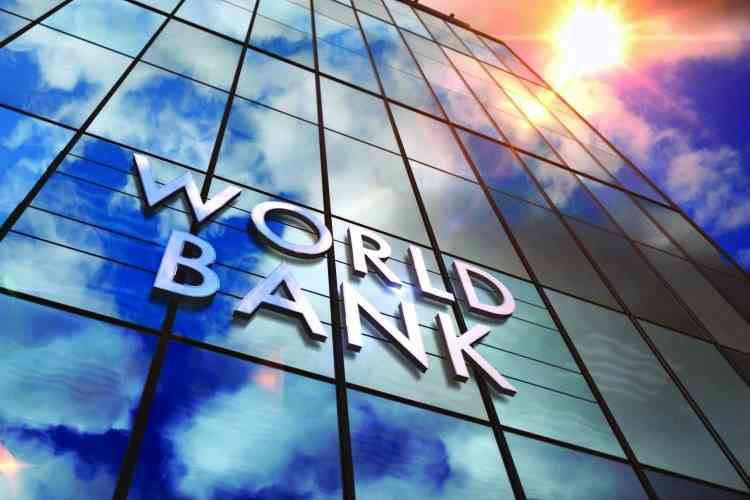
PUBLIC debt can be crucial for economic growth and development. Generally, countries borrow to smoothen their spending path as revenue collections exceed spending needs most of the time.
The raised funds will be used to finance government expenditures, protect and invest in citizens, and meet the needs of future generations.
Borrowing can be either domestic through the use of government Treasuries or foreign through contracting loans. The debt should be kept under sustainable levels so the borrower will not jeopardise their ability to repay the interest and principal amount when it falls due.
As such, efficient debt management allows additional future borrowing at a relatively lower cost because the credit risk will be minimal compared to a heavily indebted borrower.
However, many developing countries struggle with heavy debt burdens because their debt levels have reached colossal levels. As of the end of 2021, total global external debt registered a nominal increase of 5,6% to US$9 trillion.
In the World Bank’s 2023 International Debt Report, 60% of the countries eligible for the Debt Service Suspension Initiative are assessed to be at high risk of debt distress or are already in debt distress.
Two key factors fueling debt unsustainability: The first is the financing needs that have ballooned over the years due to countries’ efforts to fend off the impact of cascading crises on sustainable development.
The crises include the 2007/8 global financial recession, the Covid-19 pandemic, climate change, and the cost-of-living crisis driven by the deteriorating global geopolitics.
- Zim has 2nd highest rising food prices: WB
- 'Market discipline difficult to maintain'
- Govt policy unpredictability destroying formal economy
- UZ fiasco shows govt is aloof
Keep Reading
The escalation of geopolitical tensions, mainly emanating from the Russia-Ukraine war, is leading to tighter global financial conditions, elevated global inflationary pressures, lower growth, and higher stress on public finances, exerting massive adverse implications for low and middle-income countries’ debt dynamics.
These factors compromise developing nations’ ability to react to unforeseen contingencies, tackle climatic shocks, and invest in citizens.
Secondly, an unequal global financial architecture makes access to financing by developing nations inadequate and expensive. As alluded to earlier, debt overhang constrains development through limited access to concessionary funding, currency devaluations, rising cost of money (interest rates), and sluggish economic growth.
As such, nations have the impossible choice of either serving the people or servicing their debts.
Scanning the statistics
Africa’s debt is at its highest in over a decade. Primarily due to the pandemic, war in Europe, and rising inflation, African nations have had to take more debt. As a result, “the rise in debt stock of low and middle-income countries (LMICs) has outpaced economic growth, thus raising concerns about these nations’ ability to service their debts,” states the World Bank’s 2023 International Debt Report.
The situation is troubling, particularly for the poorest nations eligible for International Development Association (IDA) resources, as their external debt stocks have spiked faster than other LMICs.
This decade-long asymmetry between economic growth and debt accumulation has created or exacerbated debt vulnerabilities in many LMICs, and actions to address these vulnerabilities have become increasingly urgent.
The latest 2023 World Bank Debt Report shows that about 60% of IDA-eligible countries are assessed at high risk of debt distress or are already in debt distress.
For the first time since 2015, the external debt stock of LMICs plunged by 3,4% from US$9,3 trillion in 2021 to US$9 trillion in 2022. The decline is linked to negative debt outflows (disbursements minus principal repayments) and the appreciation of the USD against other major currencies.
Long-term and short-term debt stocks decreased at the same pace; the decline in the former was primarily due to a 5% reduction in obligations to private creditors.
Altogether, the external debt stock of IDA-eligible countries spiked by 2,7% in 2022 to an all-time high of US$1,1 trillion, doubling the 2012 levels.
In 2022, the external debt stock of IDA-eligible countries increased by 2,7% to a record US$1,1 trillion, more than double the 2012 level. Public and publicly guaranteed (PPG) debt stock, including the International Monetary Fund (IMF), increased 1,7% in 2022 to US$728 billion, whereas long-term private non-guaranteed (PNG) debt rose much faster, increasing 4,1% to US$225 billion.
The World Bank statistics further show that when viewed from a creditor perspective, the long-term PPG debt stock composition of IDA-eligible countries was 50% multilateral creditors, 29% bilateral creditors, and 21% private creditors.
This mix has shifted somewhat since 2012, as creditor groups have accounted for 56%, 33%, and 10%, respectively.
Public and private sector borrowers' total debt stock owed to private creditors remained steady for the IDA-eligible countries, with a 1,2% increase to US$377,4 billion in 2022. The increase was driven by lending from commercial banks and other private creditors, which increased by 2,2% to US$279,1 billion in 2022, whereas the debt stock owed to bondholders fell 1,5% to US$98,3 billion.
Africa’s external debt has grown significantly over the last decade. The total external debt was US$655,59 billion, consisting of bilateral debt (excluding China) of US$86,22 billion and bilateral (China) of US$62,89 billion), multilateral creditors of US$223,74 billion, private (excluding China) of US$258,34 billion, and private (China) of US$24,39 billion.
Africa’s external debt rose rapidly between 2014 and 2020 as a percentage of GDP.
However, in the last two years, external debt-to-GDP has decreased from 24,3% in 2021 to 22,8% in 2022. About 43% of Africa's external debt is owed to private creditors, with the significant private creditors being bondholders US$186,66 billion, China US$24,4 billion, multiple lenders US$18,5 billion, and the United Kingdom US$14,2 billion.
Then 34% of external debt is owed to multilateral creditors — World Bank-IDA US$90,1 billion, African Development Bank US$42,9 billion, World Bank-IBRD US$34,2 billion, and Islamic Development Bank US$9 billion.
Finally, 23% of external debt is owed to bilateral creditors, with major creditors being China US$60,9 billion, France US$15 billion, Saudi Arabia US$11,9 billion, Kuwait US$9,6 billion, Germany US$9,5 billion, and Japan US$8,5 billion.
China has become Africa’s biggest bilateral lender.
Its public lenders will hold almost US$63 billion of Africa’s external debt in 2022, and its private lenders will hold over US$24 billion of Africa’s external debt.
In 2022, Africa’s annual debt service - interest plus principal payments on public and publicly guaranteed (PPG) debt – was US$67.5 billion.
This constituted 12% of government spending, far exceeding health expenditures as a percentage of government spending estimated at 7% in 2020.
Granular analysis shows that the external debt stock of developing countries, particularly those in Africa, keeps growing despite being already in distress.
Are creditors complicit in this debt crisis? If so, what is their contribution and benefits? The next week’s column shall respond to the posed questions, ceteris paribus.
- Sibanda is an economic analyst and researcher. He writes in his personal capacity. — [email protected] or Twitter: @bravon96.











